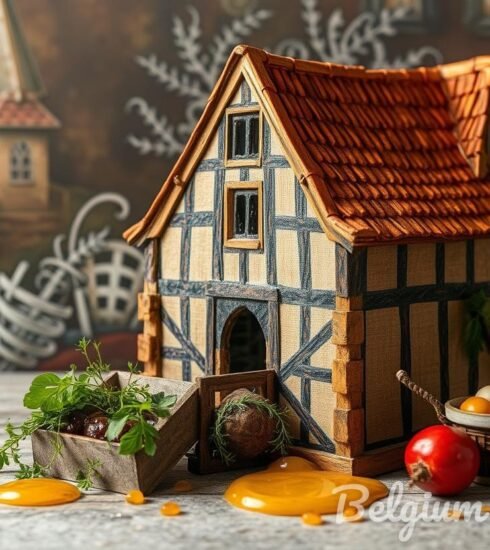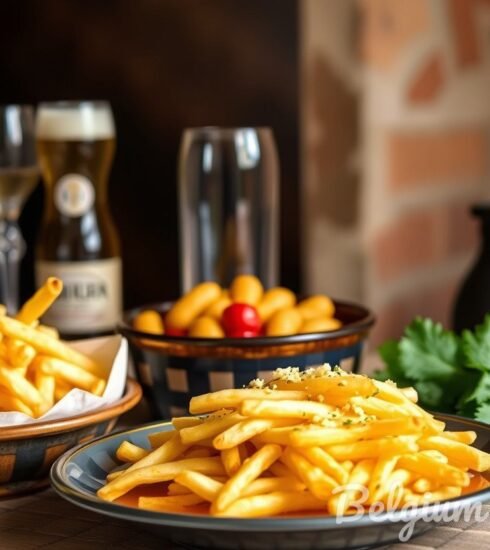Discover Hidden Belgian Culinary Gems: A Journey Through Local Flavor Treasures
Hidden Flavors of Belgium: Unearthing Culinary Treasures from the Heart of Local Communities
Belgium is often known for its iconic chocolate, waffles, and beer, but beneath these surface delights lie countless belgian culinary gems that tell a story of local culture and history. Each region boasts unique dishes and ingredients that possess the authentic flavors borne out of centuries of tradition. In this exploration, we will delve into lesser-known culinary traditions that speak volumes about local communities and their deep-rooted connections to the land.
The Rich Tapestry of Belgian Cuisine
Belgium’s culinary landscape is a mosaic of diverse influences, reflective of its complex history and multicultural population. Its cuisine varies from region to region, influenced by local tastes, traditions, and ingredients. Regardless of the area, one can uncover hidden flavors that truly define the essence of Belgian culture. The concept of “terroir” — the geographical conditions including soil, climate, and traditions that affect the quality of food and drink — plays a pivotal role in these unique offerings.
Unveiling Regional Specialties
Different regions of Belgium are home to specific dishes and culinary practices that emphasize local ingredients. Let’s explore some of these regional specialties that might just be the belgian culinary gems you haven’t encountered yet.
- Brabantine Casserole (Stoemp): Hailing from the region of Brabant, this hearty dish blends mashed potatoes with various vegetables and is often served with a sausage or meat. The addition of spices and herbs brings its flavors to life, making it a beloved comfort food.
- Waterzooi: A traditional stew originating from Ghent, Waterzooi is made with fish or chicken, local vegetables, and a rich broth. The creamy texture and subtle flavors make it perfect for chilly days.
- Vol-au-Vent: This airy puff pastry filled with chicken, mushrooms, and creamy sauce is a staple in many households across Belgium. Its lightness and decadence embody the essence of Belgian comfort food.
- Gentse Stoverij: Originating from Ghent, this beef stew is slow-cooked in dark, rich beer, providing a unique flavor not found in ordinary stews. Served with fries or bread, it marries perfectly with the local brews.
- Speculoos: A spiced shortcrust biscuit traditionally baked for St. Nicholas’ feast in December, these treats have gained popularity nationwide. With their unique flavor profile, these cookies are often enjoyed with coffee.

Local Markets: A Gateway to Culinary Treasures
Visiting local markets, such as the famed Brussels Market, or enthusiastically engaging with the friendly vendors at the Jodoigne Market, is perhaps one of the best ways to discover the hidden flavors of Belgium. These markets serve as platforms for small farmers and local artisans to share their products with the community. Here’s what you can expect to find:
- Fresh Produce: Seasonal fruits and vegetables sourced from local farms.
- Artisan Cheeses: Various types of cheese made from cow, goat, or sheep’s milk that showcase the region’s grazing animals and traditional methods.
- Cured Meats: Delicacies such as ‘saucisse de Bruxelles’ or ‘boudin’ that reflect artisanal craftsmanship.
- Craft Beverages: A selection of locally brewed beers that celebrate the country’s proud brewing tradition.
Traditional Cooking Techniques

The importance of traditional cooking techniques cannot be overstated when exploring belgian culinary gems. Here are some methods still being practiced that preserve the authenticity of Belgian cuisine:
- Stewing: Used for many regional dishes, allowing the flavors to meld and deepen over time.
- Pickling: A common method to preserve vegetables and enhance their flavors, particularly in regions close to the coast.
- Smoking: Applied to meats and fish, this technique adds an unmistakable depth to the meal.
Community Cooking Initiatives
Communities in Belgium are also working to highlight their culinary legacies through various cooking initiatives. One notable program is Flavors of the Farm, an initiative aimed at educating the public about local ingredients while offering hands-on cooking classes. Participants learn traditional recipes and cooking techniques passed down through generations, helping to foster a strong sense of community and connection to their local heritage.
Another example is the growing number of food cooperatives that promote sustainable eating. These cooperatives not only provide fresh, locally sourced ingredients but also serve as educational platforms for traditional Belgian cooking. This movement champions local chefs and home cooks passionate about showcasing belgian culinary gems.
A Culinary Journey through Chocolate
You can’t explore Belgian cuisine without mentioning its world-renowned chocolate. Belgium’s chocolate-makers are celebrated for their precision and dedication to craft. Visiting chocolate shops, especially those in regions like Brussels, Antwerp, and Bruges, offers not only a taste of some of the finest chocolate but also an insight into the artisanal processes behind it.

- Bean-to-bar Process: Many chocolatiers have adopted this technique, allowing them to have complete control over the quality and flavor of their chocolate.
- Flavor Infusions: Innovative flavor pairings, including local fruits and spices, create unique Belgian chocolates that reflect the local palate.
- Workshops and Tastings: Numerous chocolatiers offer workshops to understand the art of chocolate-making, where you can create your own sweet masterpieces.
Pairing Belgian Cuisine with Local Brews and Wines
The connection between Belgian food and drink is profound and deserves special attention. Pairing traditional dishes with local brews enhances the dining experience and highlights the region’s rich culinary culture. Some classic pairings include:
- Carbonnade Flamande (beef stew) with Flemish Ale: The rich flavors of this dish harmonize perfectly with the deep, malty taste of Flemish ale.
- Moules-frites (mussels and fries) with Pilsner: The refreshing, crisp notes of a Pilsner complement the brininess of the mussels.
- Waffles with Fruit Lambic: The sweetness of the waffle pairs beautifully with the tartness of the Lambic, making it an irresistible treat.
Conclusion
By exploring these facets of Belgian cuisine, from traditional dishes to innovative culinary initiatives, you uncover a wealth of hidden flavors. Each community brings its history, its ingredients, and its heart into various plates that represent the best of what Belgium has to offer. The quest for belgian culinary gems not only tantalizes the palate but also enriches the soul, deeply connecting us to the vibrant local culture and traditions.





